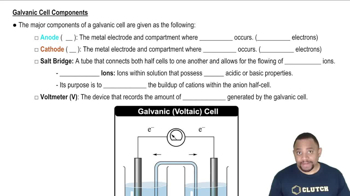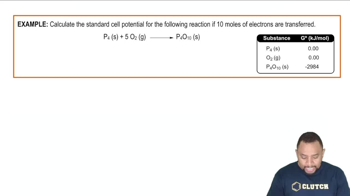Here are the essential concepts you must grasp in order to answer the question correctly.
Voltaic Cell Components
A voltaic cell consists of two electrodes: the anode and the cathode. The anode is where oxidation occurs, releasing electrons, while the cathode is where reduction takes place, accepting electrons. The cathode has a higher potential energy for electrons compared to the anode, as it is the site of electron gain, leading to a flow of electrons from the anode to the cathode.
Recommended video:
Electrical Potential and Its Units
Electrical potential, often measured in volts (V), represents the potential energy per unit charge available to move electrons through a circuit. One volt is defined as one joule of energy per coulomb of charge. This relationship indicates that higher electrical potential corresponds to greater energy available for electron movement, which is crucial for understanding how voltaic cells operate.
Recommended video:
Relationship Between Joules and Volts
The relationship between joules and volts is fundamental in electrical systems. Specifically, 1 volt equals 1 joule per coulomb, meaning that if a charge of one coulomb moves through an electrical potential difference of one volt, it gains one joule of energy. This connection is essential for calculating energy changes in electrochemical reactions within voltaic cells.
Recommended video:
Relationship between ∆E°, ∆G°, and K Example





